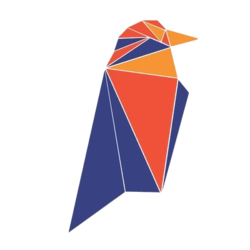About Ravencoin
Ravencoin (RVN) Review: A Comprehensive Overview
Ravencoin (RVN) is a unique and innovative blockchain platform designed to focus on the creation and transfer of digital assets. Built with simplicity, security, and decentralization in mind, Ravencoin aims to make the creation and transfer of assets as easy as sending Bitcoin. It has rapidly gained attention in the crypto community for its distinct approach to asset tokenization. In this review, we’ll dive into Ravencoin’s features, use cases, market potential, and why it stands out among other cryptocurrencies.
What is Ravencoin?
Ravencoin is a blockchain platform designed specifically for the issuance, transfer, and tracking of assets. Unlike general-purpose cryptocurrencies like Bitcoin or Ethereum, Ravencoin focuses exclusively on asset tokenization. The project was launched in January 2018 by Bruce Fenton and a group of developers with the goal of providing a decentralized solution for the creation and management of assets on the blockchain. The platform is designed to allow users to easily create and transfer tokens representing real-world assets like commodities, securities, or even real estate, in a secure, transparent, and efficient manner. The Ravencoin network is built on a fork of Bitcoin’s code, which means it inherits many of Bitcoin's properties, including proof-of-work (PoW) consensus, but with a specific focus on asset creation and management. Ravencoin's native cryptocurrency, RVN, is used to pay transaction fees and facilitate the network’s operations.
Key Features of Ravencoin
- Asset Tokenization: One of the core features of Ravencoin is its ability to create and transfer digital assets easily. Whether it’s real estate, stocks, or digital art, users can create custom tokens on the Ravencoin blockchain to represent ownership of these assets. This makes Ravencoin a powerful tool for tokenizing real-world assets in a decentralized environment.
- Decentralization: Ravencoin’s primary focus is on decentralization. The network operates on a fully decentralized, permissionless, and censorship-resistant blockchain, which means that no central authority or third party controls the network. This makes it a strong choice for users who value privacy, transparency, and trustless systems.
- Fast Transactions and Low Fees: Ravencoin aims to be a practical tool for real-world asset transactions, so it is optimized for fast transaction times and low fees. This makes it easier and more cost-effective for users to transfer tokens, even in high-volume environments.
- Security: Ravencoin uses proof-of-work (PoW) as its consensus algorithm, similar to Bitcoin. This means that the network’s security is backed by miners who validate and secure transactions. The security of the Ravencoin blockchain makes it a trustworthy platform for asset issuance and management.
- Custom Assets and Messaging: Ravencoin allows users to create custom assets through its “asset creation” feature. These assets can be anything from tokens representing shares in a company to digital collectibles or game items. In addition, Ravencoin enables users to send messages along with their transactions, providing a more interactive and informative experience.
Use Cases of Ravencoin
- Tokenization of Real-World Assets: Ravencoin’s primary use case is the tokenization of real-world assets. With Ravencoin, individuals and businesses can create digital tokens to represent real estate, company shares, or commodities like gold or oil. This can simplify the process of asset transfer, making it faster and more secure.
- Asset Transfer and Trading: The Ravencoin blockchain enables the transfer and trading of assets in a decentralized manner. By utilizing Ravencoin, users can create a more accessible and efficient marketplace for assets, with reduced reliance on centralized intermediaries like brokers and banks.
- Security Token Offerings (STOs): Ravencoin has gained attention in the financial industry as a platform for issuing and managing Security Token Offerings (STOs). Unlike traditional initial coin offerings (ICOs), STOs are regulated offerings of tokenized securities, and Ravencoin provides a compliant and efficient platform for conducting such offerings.
- Digital Collectibles and NFTs: Ravencoin’s custom asset feature has also found its way into the world of non-fungible tokens (NFTs). Artists, creators, and developers can issue unique, verifiable digital assets representing art, collectibles, and virtual goods.
Market Potential and Adoption
Ravencoin’s market potential lies primarily in its ability to tokenize and transfer assets. As the world moves toward digitizing assets, Ravencoin’s infrastructure provides a cost-effective and secure solution for businesses and individuals who want to make the leap into blockchain technology. The global trend of asset tokenization could give Ravencoin an edge, especially in industries like real estate, finance, and entertainment. The tokenization of traditional assets could also drive mainstream adoption of Ravencoin, especially in sectors where transparency, security, and decentralization are key. As more businesses and individuals recognize the potential of blockchain for asset management, Ravencoin’s use cases will only grow, further boosting its value proposition.
RVN: The Token
RVN is the native token of the Ravencoin network and is used for transaction fees and to secure the network. Users can also stake RVN to participate in the network’s consensus mechanism. Since Ravencoin operates on proof-of-work, miners play an essential role in verifying transactions and maintaining the network’s security, and they are rewarded in RVN. RVN’s price and overall adoption are tied closely to the success of the Ravencoin platform. As tokenization becomes more mainstream, the demand for RVN will likely increase. However, like any cryptocurrency, RVN is subject to market volatility and speculative trading.
Conclusion: Is it worth it?
Ravencoin offers an exciting proposition in the blockchain space. Its focus on asset tokenization, decentralization, and fast transaction processing makes it a valuable platform for the future of finance, real estate, and other industries that rely on the transfer of assets. Ravencoin’s unique features set it apart from other cryptocurrencies, and its commitment to simplifying the process of asset creation and transfer could give it a competitive edge as the tokenization market grows. However, as with any cryptocurrency, potential investors should approach with caution. While Ravencoin has many promising features, its adoption and market value depend on the broader acceptance of blockchain technology in the asset management and finance sectors. If Ravencoin can continue to gain traction and provide real-world use cases, it could become a significant player in the cryptocurrency space.
 Ravencoin
(RVN)
Ravencoin
(RVN)
